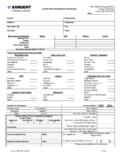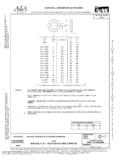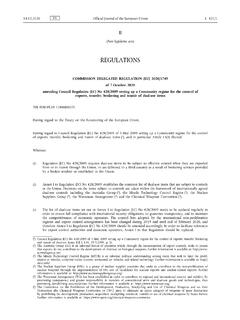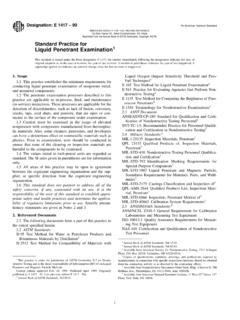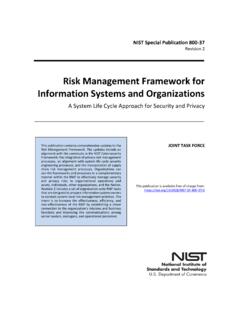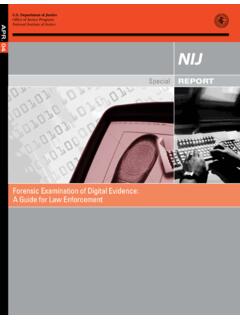Transcription of 9100 Auditor Guidance Material - SAE International
1 Dated: 26 September 2011 Page 1/22 9100 Auditor Guidance Material What to look for What to ask Dated: 26 September 2011 Page 2/22 9100 Auditor Guidance Material Introduction This document provides general Guidance and potential questions by audit teams when executing the audit process, described by the 9101:2010 standard for 9100:2009 audits. Any issues identified during audits are to be documented against 9100:2009 requirements. This Guidance is not intended to add or take away from the stated standard requirements, but provide examples and thought stimulation on how auditors can: identify applicable objective evidence ( What to look for ); and ask relevant questions ( What to ask ).
2 Acceptable means of compliance are not limited to those items listed in this document. NOTES: This living document will be regularly updated and posted on the IAQG website. This revision does not address 9110 and 9120 audits. This is also useful in preparation for an audit. 9101 Auditor Guidance Material Dated: 26 September 2011 Page 3/22 Process Auditing Approach When auditing each process identified by the organization, there are basic questions that should be asked, for example: Is the process identified and appropriately defined?
3 Is the process identified and appropriately defined (inputs, outputs, resources & controls)? Are responsibilities of process owner and process performers assigned? Is the process implemented and maintained? Is the process effective in achieving the desired results? Other questions could include the following: What is the process? What is it trying to achieve? Who is the customer of the process? Does the process address applicable customer specific requirements? Are competencies identified?
4 Is the process operating, as defined? What is the desired level of performance? Does it reflect specified customer targets / performance requirements? What are the measures (key performance indicators, etc.)? What is the current level of performance? Is the process performance regularly reviewed by Top management? Where performance is not being achieved, are improvement plans in place? NOTE: See also, the Guidance on the: Concept and Use of the Process Approach for management systems available on the ISO website, free of charge (ref : ISO/TC 176/SC2/N544R3) and refer to 9101:2010 What to look for / What to ask 9101 Auditor Guidance Material Dated: 26 September 2011 Page 4/22 General requirements What to look for Consideration by the organization of: describing the activities of the organization in processes.
5 Input, output, constraints, resources and measure providing visibility, including sequence and interaction of QMS processes defined by the organization ( , process model, flow diagram) formalizing continual improvement activities/efforts for defined processes compliance with customer and applicable statutory and regulatory requirements measuring main criteria: - How is this measured? ( , target setting, trends, on customer complaints, first pass yield, OTD reliability) - If out of target, how is this analyzed?
6 How are actions taken? Examples of objective evidence: process map list of customer and applicable statutory and regulatory requirements identification of process owners records on process effectiveness reviews, such as minutes of meetings measuring or evaluation methods of processes (how) criteria and methods used to ensure both operation & control are effective, , objective of the process, quantitative targets such as first pass yield, max rate non-conforming parts, lead-time, max flow-time, including maximum variation/spread availability of resources.
7 Man/machine capacity plans (short term and M/LT) information needed for each process, , specifications (design), orders, drawings(production), work-orders, job-cards, Monitoring (linked with am objectives/targets) data on improving its effectiveness, , statistics on product deficiency rates documents, including records, related with outsourced processes, , contracts, conformity statements) NOTE: The use of Turtle diagram or SIPOC approach is a means of compliance : description of input, output, process, resources, method, measurements Documentation requirements General What to look for Consideration by the organization of.
8 Availability of relevant Quality Management System documentation and changes (not only procedures) at all places to be asked all through the audit existence of a list of documents, including the documented procedures required by the QMS standard and by the organization itself availability of documents in the different work places / shop floors by asking various people issue of the documents and regular updates samples upwards and downwards showing that the references to and from the procedures are correct (if the documented procedures are not part of the QM) NOTES.
9 The list itself is NOT a requirement The International standard requires, at least, the following documented procedures: - Control of documents - Control of records - Internal audits - Control of nonconforming product - Corrective actions - Preventive actions Documentation requirements Quality manual What to look for Examples of objective evidence: scope of the QMS with respect to the scope of certification (coverage) justifiable exclusions (only to clause 7, ensure that exclusions are mentioned in the scope of certification) and their justification Quality manual and procedure references, issue What to ask Recommended questions : Are the processes of the QMS explicitly mentioned and descried in the QM?
10 Are the process interactions described? In what manner? What to look for / What to ask 9101 Auditor Guidance Material Dated: 26 September 2011 Page 5/22 Documentation requirements Control of documents What to look for Consideration by the organization of: who is responsible for development, approval , distribution, .. issue control (date, number, ..) - update procedures, instructions, definition / manufacturing / maintenance files, templates, purchasing contracts, change notes, .. use of electronic tools for documents validation by workflow Examples of objective evidence: the documentation approval status and update status/issue control if not valid documents (paper or electronic) can be in use during product realization (sampling) What to ask Recommended questions : How are documents of external origin controlled?










